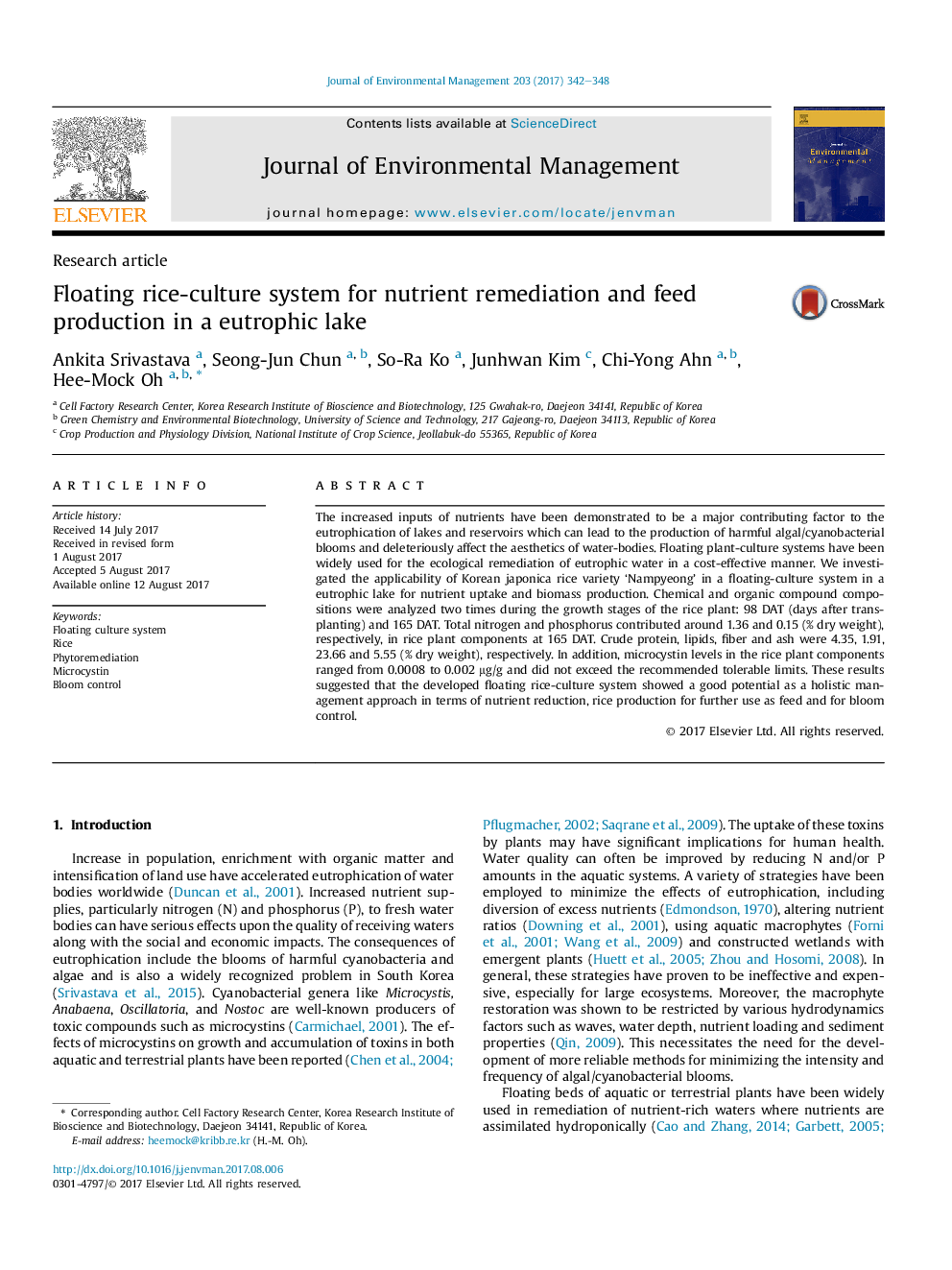| Article ID | Journal | Published Year | Pages | File Type |
|---|---|---|---|---|
| 5116519 | Journal of Environmental Management | 2017 | 7 Pages |
â¢Floating rice-culture system assimilated nutrients effectively.â¢Microcystin content in rice plants did not exceed the recommended tolerable limits.â¢Nutrient- and organic compound-rich rice biomass can be a resource for animal feed.â¢The developed floating rice-culture system is environmentally sustainable.
The increased inputs of nutrients have been demonstrated to be a major contributing factor to the eutrophication of lakes and reservoirs which can lead to the production of harmful algal/cyanobacterial blooms and deleteriously affect the aesthetics of water-bodies. Floating plant-culture systems have been widely used for the ecological remediation of eutrophic water in a cost-effective manner. We investigated the applicability of Korean japonica rice variety 'Nampyeong' in a floating-culture system in a eutrophic lake for nutrient uptake and biomass production. Chemical and organic compound compositions were analyzed two times during the growth stages of the rice plant: 98 DAT (days after transplanting) and 165 DAT. Total nitrogen and phosphorus contributed around 1.36 and 0.15 (% dry weight), respectively, in rice plant components at 165 DAT. Crude protein, lipids, fiber and ash were 4.35, 1.91, 23.66 and 5.55 (% dry weight), respectively. In addition, microcystin levels in the rice plant components ranged from 0.0008 to 0.002 μg/g and did not exceed the recommended tolerable limits. These results suggested that the developed floating rice-culture system showed a good potential as a holistic management approach in terms of nutrient reduction, rice production for further use as feed and for bloom control.
Graphical abstractDownload high-res image (454KB)Download full-size image
